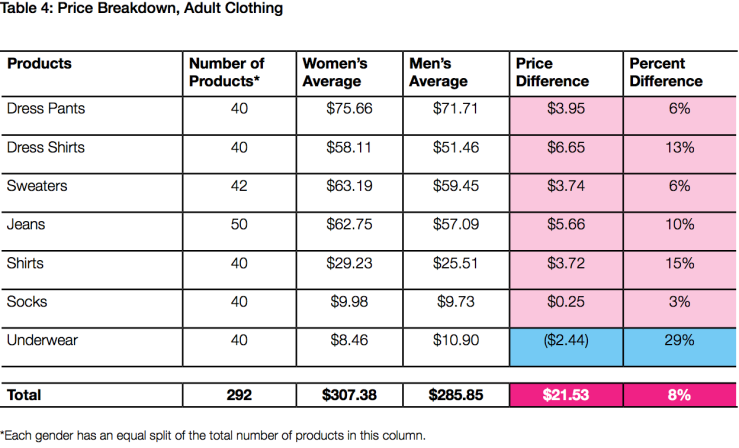A New York City Department of Consumer Affairs study determined that self-care and healthcare products marketed to women generally cost more than the versions for men from the same brand.
The study looked at industries ranging from toys and accessories, clothing, personal care products, among others. The most drastic price differences occurred between women’s and men’s self-care products and clothing.


Information in each chart was compiled during the Department of Consumer Affair’s investigation. As shown, a number of each product listed was compared between the version for men, and the price difference was calculated into an average and totaled at the end.
The price hike women-targeted products generally face is due to a marketing strategy referred to as the “pink tax.” According to USNews.com, “women, who statistically already make less money than men on average, may pay a premium for items marketed to them simply because they aren’t aware of this so-called pink tax…Some items marketed to women not only cost more but actually contain less of the product because manufacturers make the product smaller and more feminine-looking, an approach called ‘shrink it and pink it.'”
In an interview with Ian Parkman, assistant professor of Marketing at the University of Portland, USNews.com reported that a big reason women’s products cost so much more is because consumers are generally ignorant.
“Manufacturers can find some consumers who are not aware of price differences or are willing to pay for something that’s really the same as the male version,” Parkman said in the USNews.com article. “[With razors], the blue version [might be] $1.99, and the pink razor [might be] $2.50, but pink plastic versus blue plastic can’t explain the price difference.”
More often than not, women are also forced to spend more money on necessities like menstrual products because they are heavily taxed.
“[Budgeting for menstrual products] are just an added expense that men generally do not have to worry about,” said professor of Political Science at Rowan University, Dr. Danielle Gougon.
To learn a little bit more on why women’s self-care products cost more, please watch the video below.
Animated video by Rhiannon Bulaga

